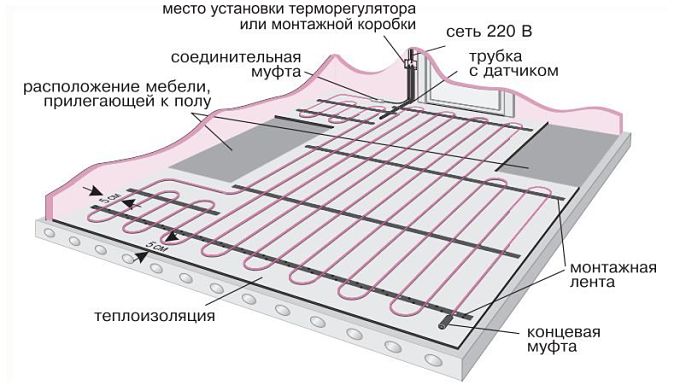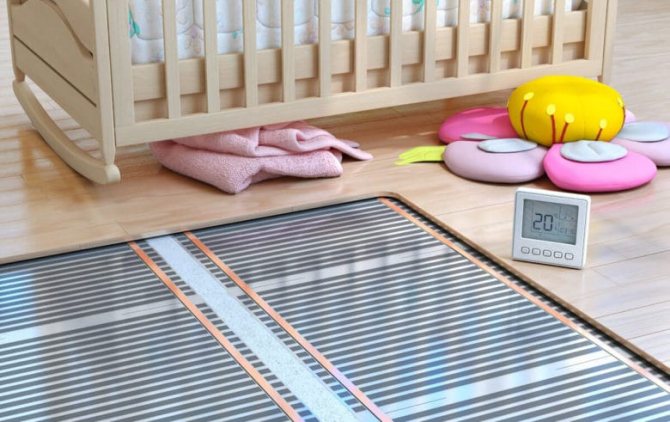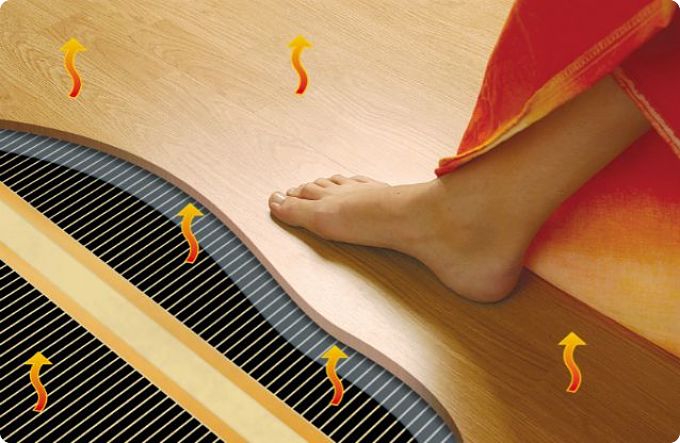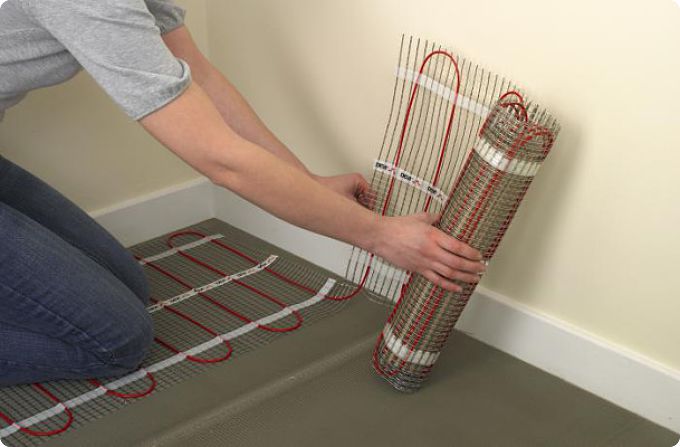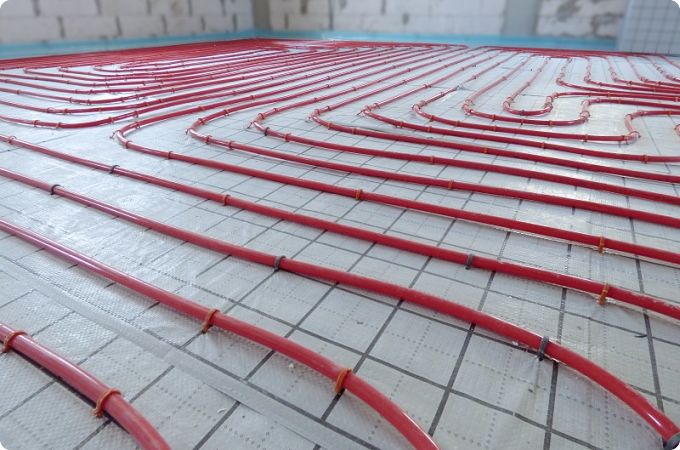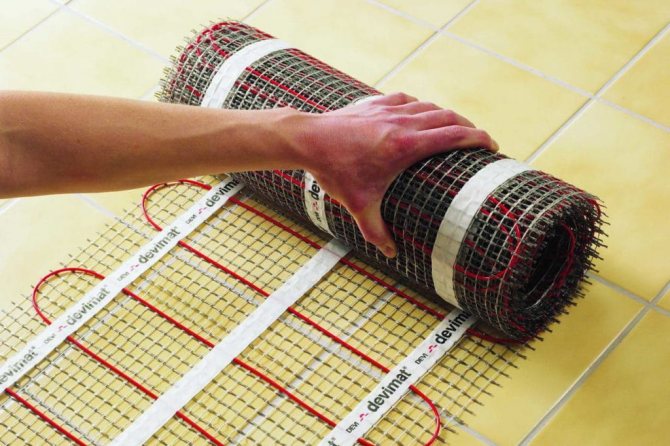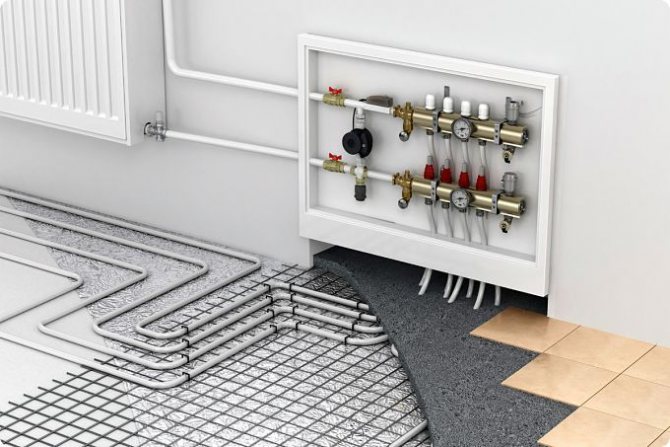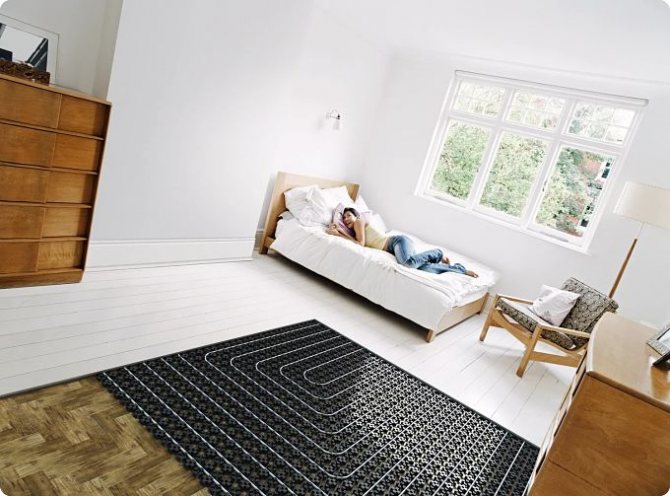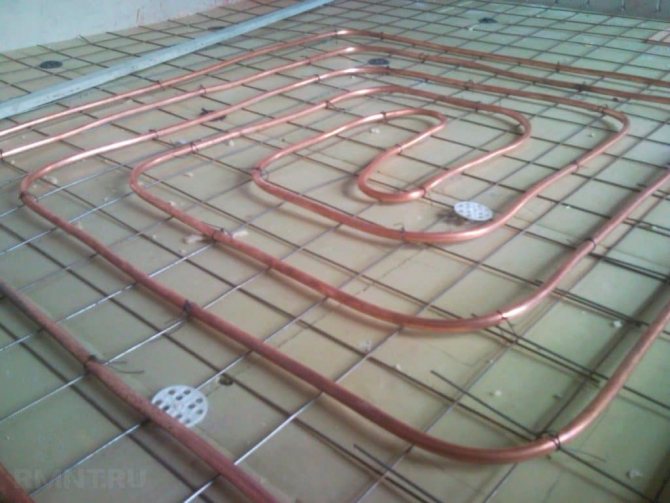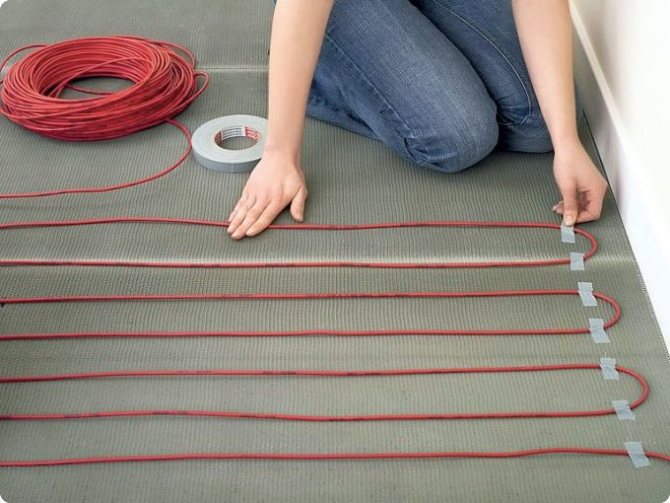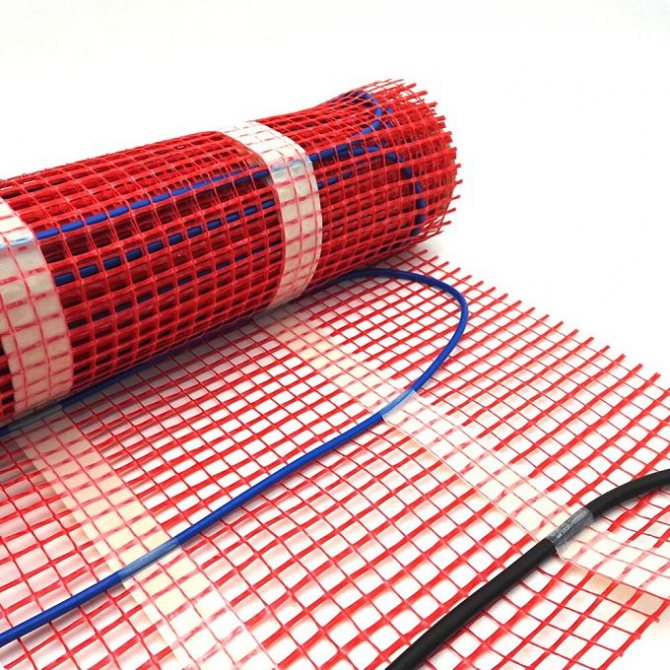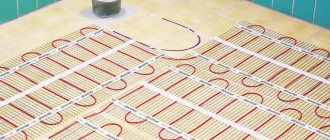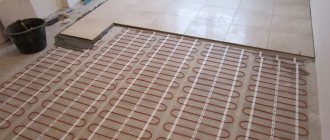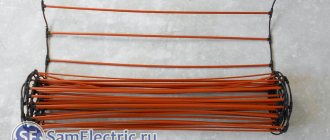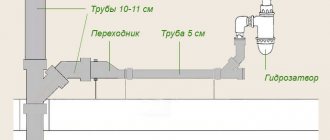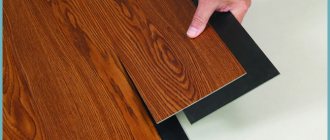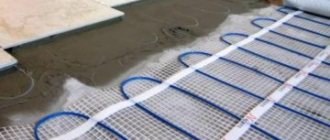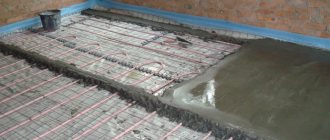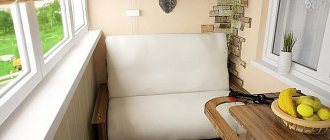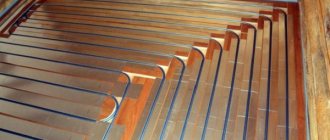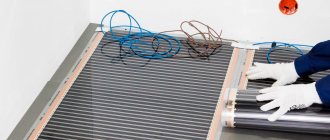Agree, it's nice to walk barefoot on a warm floor, even when it's winter outside. And it is not necessary to cover everything around with dust-collecting carpets. To maintain the desired surface temperature, there are special technologies.
These are underfloor heating systems that can be combined with classic heating or made the main sources of heat in the house and forget about radiators forever.
Such systems are divided into electrical and water. Which ones to choose to make your home warmer and more comfortable? You can find the right solution if you analyze all the pros and cons of electric and water floors.
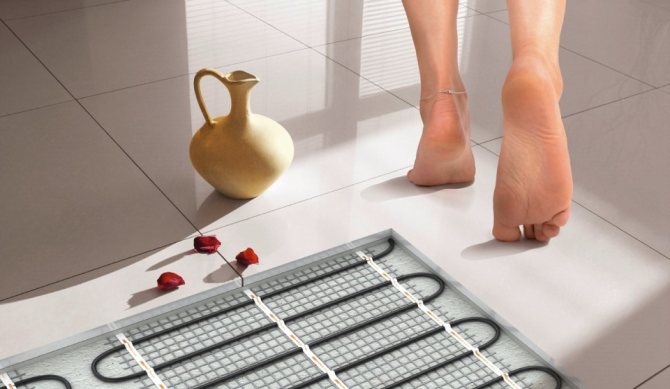
Electric underfloor heating or water heating: comparison
The main difference between an electric underfloor heating and a water underfloor heating is clear already by the name and consists in the heating method.
- In the first case, elements are placed under the surface that are heated by electricity and transfer heat to the floor.
- The water floor is made of metal-plastic or polyethylene pipes, through which hot water passes. Such a system provides for the presence of a boiler and a control unit.
There are many differences between these two types of systems. We'll go through the main ones.
Important characteristics
To understand which warm floor to choose - electric or water, you first need to understand the main properties of these systems. It is important to understand that several systems fall under the general name “electric warm floor”. They differ in installation, price and operating principles.
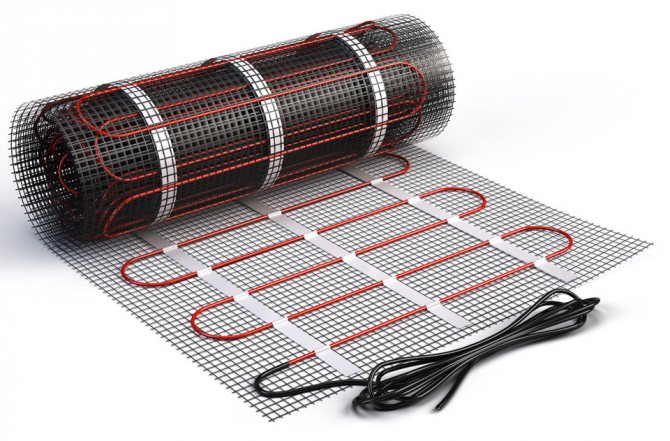

There are two main types of electric underfloor heating:
- infrared;
- cable.
In the first case, it is carbon-coated film or carbon rods in mats. The floor is heated by infrared waves and transfers heat upward. These are the easiest systems to install.
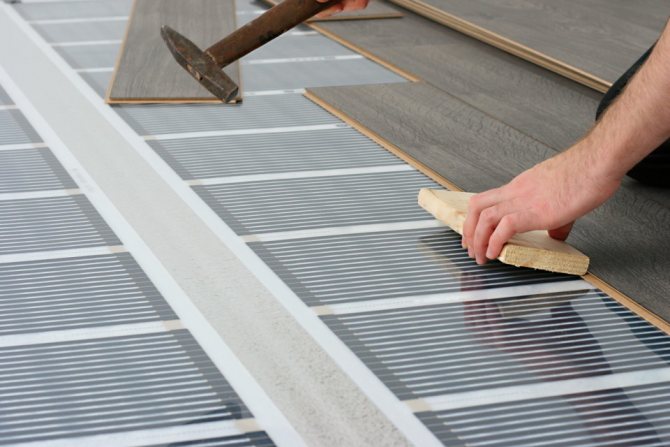

Cable underfloor heating can look like separate wires or finished mats. Ready-made mats are much more convenient.
Cable systems are divided into:
- standard resistive
- modern self-regulating.
The latter are much more economical and have improved properties.
As a rule, conventional cable systems should not be installed under furniture, otherwise the cable may overheat and deteriorate. Self-regulating cables can be installed under the entire floor.
Safety
Clearly, water floors are safer. The worst thing that can happen to them is a leak.
Although the installation of an electric underfloor heating is relatively simple, an electrician must be involved in the process. Improper installation and connection of the cable can threaten minor and major troubles with the electrician. It is recommended to make reliable insulation and provide grounding.
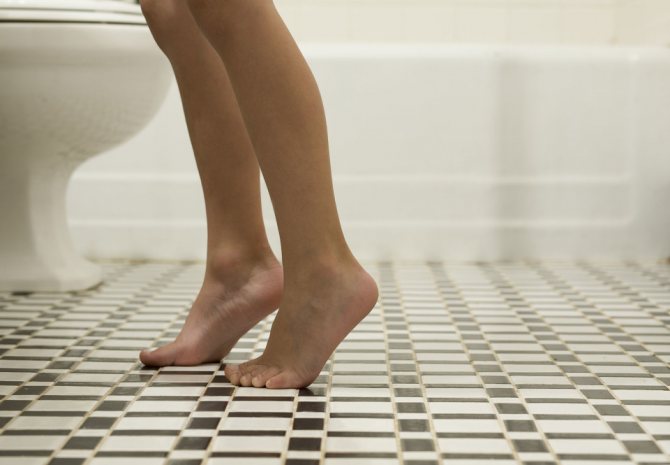

Another problem with cable floor heating is electrical radiation. Although it does not exceed the legal limit, it is believed to be detrimental to health. Heating with infrared waves is called safer.
Reliability
Provided that the wiring meets all modern requirements, electric floors can last 30 years. But the water system will sometimes have to be repaired. Although the pipes themselves are durable, various fittings and other connectors will wear out over time and need to be replaced.
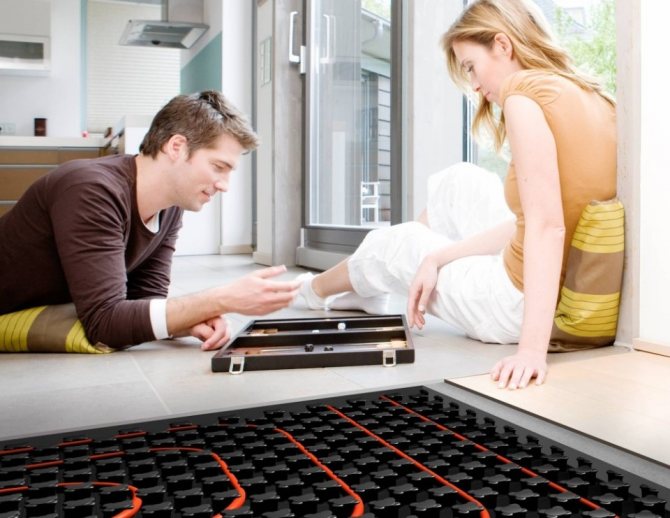

Therefore, when laying a water floor, now they are trying to carry out installation without a screed, using special profile mats, into which it is convenient to fasten pipes.
Recommendations for choosing a warm floor in the bedroom
- In a private house or in an apartment no higher than the first floor, it is rational to use water system... In terms of heating costs, it is more profitable than electric. And in case of a breakdown, the risk of flooding of neighbors is excluded.
- Before installing a warm floor, you need to lay insulation on the surface and a reflective screen on top of it. This helps to distribute heat evenly throughout the screed.
- If the underfloor heating is installed in order to replace the main heating, then a water system should be used. In this case, a denser pipe layout can be made near the walls and windows, which will additionally warm up the cold areas of the room.
- It is not recommended to install the electrical system under the parquet floor... When heated, it will dry out and deform. Water floors are installed under any surface, because the water system is installed under the screed.
- If it is necessary to equip warm floors without large-scale repairs and a new screed, an infrared film is used. But you shouldn't put it under furniture, it can overheat.
Other pros and cons
The main advantage of the electric underfloor heating is that it can be used “pointwise”, for example, only in the children's play area and toilet. And it is possible to turn on the system as needed.
The downside is that electricity is more expensive than water. Even with the most advanced electrical system, get ready to invest in your comfort.
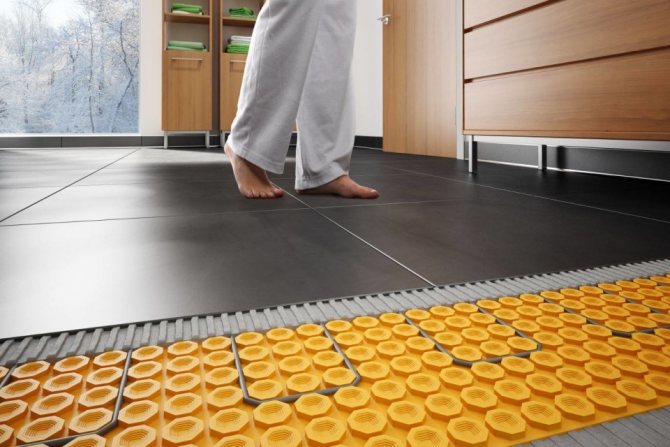

Remember that electrical systems are current source dependent. If there are frequent power outages in your area, you will have to provide an uninterruptible power supply for your home network.
The main advantage of a water-heated floor is cost-effectiveness. Although you will need to spend much more money on the installation, in the future your efforts will pay off.
If you live in an apartment of a multi-storey building, most likely, a water-heated floor is not for you. For such work, you must obtain a special permit. Indeed, for floors, such a system is a huge load. In addition, by connecting to central heating, you will reduce the heating quality of neighboring apartments. And if the system leaks, the consequences will hit your pocket hard.
Brief summary
So, let's summarize the preliminary results. We found out that water floors have the following advantages:
economy in use;
- safety;
- no radiation.
Minuses:
- more expensive installation;
- the need to replace fittings;
- possible leaks;
- the problem of installing a high-rise building in an apartment.
Electric underfloor heating also has its advantages:
- ease of installation;
- the ability to install high-rise buildings in an apartment and point-to-point in certain areas;
- long service life.
And the cons:
- the cost of paying for electricity;
- the presence of radiation;
- danger of electric shock and fire due to improper installation;
- the need for an uninterrupted source of electricity and good wiring.
In any case, underfloor heating (electric or water) has one important advantage - it creates a feeling of coziness and gives our feet warmth, which is extremely important for health.
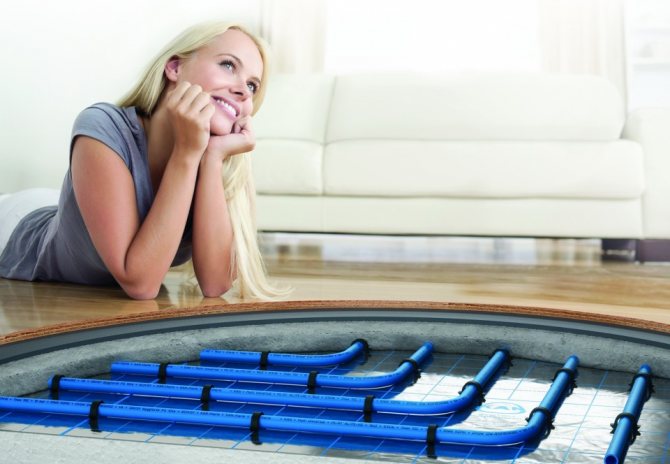

Cons of installing a warm floor in the bedroom
- High cost of materials and equipment... Additional costs for installation. Without special skills, you need to entrust the laying of the floor to professionals.
- The need to conduct preparatory work in the form of a concrete screed and leveling the original surface.
- The system cannot be repaired... If individual elements fail, you need to change it completely.
- For finishing coat are used only natural materialsso that when heated they do not emit substances hazardous to health and an unpleasant odor. The floor covering must have a high level of thermal conductivity.
- To install a water floor in an apartment, it is necessary to achieve permissions of the respective services.
- Long time to heat the room... First, the system heats up the concrete screed, and only then the coating and the air in the room.
- Not suitable for low ceiling bedrooms, since the concrete screed and the system itself can exceed 10 cm in thickness. As a result, the height of the room is reduced.
To choose a warm floor, you should have an idea of what systems exist, and which one is most suitable for the bedroom.
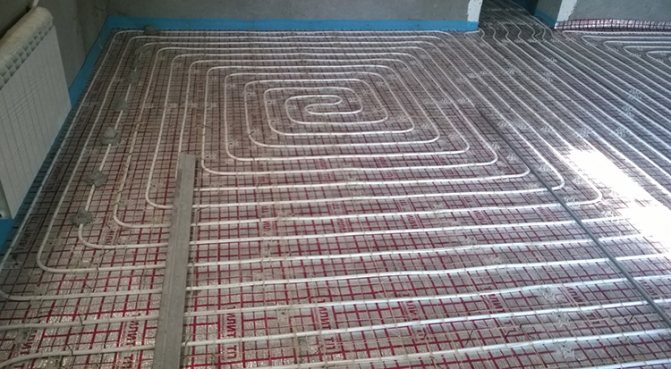

Finishing coatings for different types of underfloor heating
It is important that underfloor heating coatings are suitable. There are the following recommendations:
To the water floor is preferable:
- laminate;
- parquet;
- linoleum on a thin substrate;
- ceramic tile;
- self-leveling floor.
For an electric underfloor heating system, it is recommended:
- laminate;
- thin parquet;
- ceramic tiles;
- linoleum without insulation;
- self-leveling floor.
For foil electric underfloor heating, it is advised to use laminate and non-insulated linoleum.
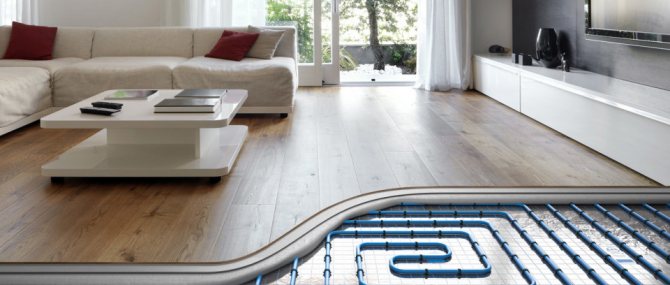

Myths about laying warm floors in the bedroom
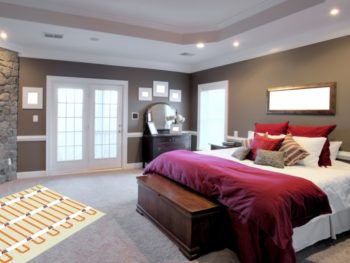

Comfortable stay in the bedroom with floor heating
Many people worry that heated floors cannot be laid in the bedroom, claiming that they are suitable only for utility rooms and where people are few. This statement is absolutely wrong and most likely arose after the use of low-quality flooring, which, when heated, gave off unpleasant odors. There are many good quality coatings on the market today that are environmentally friendly and do not emit harmful substances. Hence, it is safe and cost effective to use underfloor heating in the bedroom.
The second myth that walks among consumers: floor heating is not used in the bedroom, since the heat coming from below (close to the head) harms sleep and human health. After all, it is known that during sleep the room must be ventilated. Cool and fresh air is required in the bedroom. It is right. By the way, this issue is solved by the underfloor heating system, since it has the ability to automatically regulate the temperature. Therefore, setting the desired value is easy.
Having studied how to equip a warm floor in the bedroom, all the pros and cons of installing it, everyone makes their own choice. However, do not forget about the large number of advantages and several disadvantages, which are covered by the comfortable conditions in the room.
Laying underfloor heating in the bedroom:
Underfloor heating electric or water - which is more profitable?
So which floor is more profitable, water or electric? Having analyzed all the advantages and disadvantages of the systems, it is easy to answer this question. Let's analyze the benefits point by point.
- For residents of high-rise buildings, only electrical options are uniquely suitable. The only exceptions are apartments on the ground floor with a modern heating system, so that your water floors do not harm your neighbors.
- But the owners of private houses have a wide choice. All types can be used.
- For temporary heating and heating in certain areas, it is more profitable to choose electrical systems.
- For permanent heating throughout the entire area of the house, it is better to choose water floors.
- Which warm floors are more economical, water or electric? Here, as we found out, the first ones win. But installation is usually more expensive.
- If you choose the most economical of electrical systems, give preference to self-regulating cable or film infrared.
Of course, which warm floor is better to choose is up to you. Follow our recommendations and make your home even more cozy and comfortable!
Varieties of systems
- Water floor has a low cost. Insulation waterproofing material is laid on the base, then plastic or metal pipes are mounted, through which water is subsequently supplied from the central heating system. They can be laid over the entire area of the room. The base for the topcoat is a concrete screed. It is more expedient to entrust the installation of such a floor to a professional. In operation, this type is more economical than the others. Setting the timer and thermostat reduces costs by allowing you to set a comfortable temperature and heat supply time.The water floor is suitable for private houses or apartments with individual heating. It is recommended to replace the system every 5 years to avoid corrosion of metal pipes or leaks.
- Electric floor suitable for both a private house and an apartment. The base of the heating element is the cable. It can be strung on a base mesh or it can be single, freely located on the surface. Laying is carried out with grounding and insulation and poured with a concrete screed about 5 cm thick. This coverage is powered by electricity and plugs into an outlet. This system involves high electricity costs. To reduce costs, special temperature controllers are installed. Subject to safety rules, this type of floor does not pose a threat to life and health.
- Infrared film considered an economical option. For additional safety, chipboard plates are used as screeds. More often the floor finish is installed directly on the infrared foil. Laminate, parquet or linoleum are suitable for finishing. The principle of operation is the passage of electricity through an aluminum film, which is fixed between the insulators. Due to the small section of aluminum, electricity consumption is also reduced along with heat dissipation.
Reviews of people about different types of underfloor heating
And here we have selected the most indicative reviews of people who have already made a warm floor. There are also positive reviews, but there are not so much. But, read it yourself and draw your own conclusions. For example, here is a review about film warm floors:


The person listed in detail and from a practical point of view the cases when it is worth using such a floor. What else are people saying on the forums.


There is also a myth about the enormous harm from electric underfloor heating due to the electro-magnetic field that they create. Here's what scientists have to say about this:


There is also a rumor that such floors can cause impotence and even diabetes. We don't think these stories are worth a damn, so don't believe them.
In conclusion, we can say this: underfloor heating is not an urgent need, but rather a pleasant bonus. Therefore, whether it is worth doing it or not, your wallet will tell you. And what kind is better to choose, you now know for sure!
In what cases is a warm floor exactly necessary?
Sometimes a warm floor is an additional convenience, but there are special cases when it becomes simply necessary.
1. If you did redevelopment and demolished the wall between the balcony and the kitchen in order to expand the space, then one battery designed for a smaller cubic capacity will not be enough.
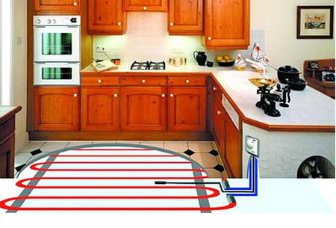

The kitchen will not warm up well, therefore, you need to either install a second radiator or make a warm floor. The latter option is preferable, since heating goes over the entire area.
2. If you made a countertop in place of the window sill above the radiator in the kitchen. In this case, all the heat that should go up from the battery does not go anywhere, and as a result, the air temperature in the kitchen is low. Of course, you can make small holes in the countertop for warm air to escape, but in practice, there is no good from this maneuver.
3. If you have small children who are difficult to get to wear slippers all the time. Here it is better not to be stingy and make heating under the stove, as, in the cold season, children can often get sick. This is especially true for very young children who are still crawling.
Also, do not forget this thing: if you make a warm floor in the kitchen with the help of any electric shades, then this does not oblige you to anything at all. You can turn the heating on and off whenever you like, at least once a month. So, the equipment of such a floor does not necessarily involve colossal light costs.

